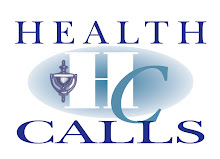Monday, May 16, 2011
National Stroke Awareness Month: Guidelines to Recognize and Act Quickly Can Reduce Symptoms
May is Stroke Awareness Month. The following guidelines are Published by the National Stroke Association.
Stroke 101
• Stroke is a brain attack, cutting off vital blood flow and oxygen to the brain.
• In the United States, stroke is the third leading cause of death, killing about 137,000 people each year, and a leading cause of serious, long-term adult disability.
• From 1996 to 2006, the stroke death rate fell 33.5 percent and the actual number of stroke deaths fell by 18 percent.
• Approximately 795,000 strokes will occur this year.
• Stroke can happen to anyone at any time, regardless of race, sex or age.
• Approximately 55,000 more women than men have a stroke each year.
• Men’s stroke incidence rates are greater than women’s at younger ages, but not older ages.
• African Americans have almost twice the risk of first-ever stroke compared with whites.
• Types of Stroke:
o Ischemic stroke occurs when arteries are blocked by blood clots or by the gradual build-up of plaque and other fatty deposits. About 87 percent of all strokes are ischemic.
o Hemorrhagic stroke occurs when a blood vessel in the brain breaks leaking blood into the brain. Hemorrhagic strokes account for thirteen percent of all strokes, yet are responsible for more than thirty percent of all stroke deaths.
• Two million brain cells die every minute during stroke, increasing risk of permanent brain damage, disability or death. Recognizing symptoms and acting fast to get medical attention can save a life and limit disabilities.
• The prevalence of transient ischemic attacks (TIA) increases with age. Up to 40 percent of all people who suffer a TIA will go on to experience a stroke.
• The estimated direct and indirect cost of stroke for 2010 is $73.7 billion.
Stroke Strikes Fast. You Should Too. Call 9-1-1.
Few Americans know the symptoms of stroke. Learning them—and acting FAST when they occur—could save your life or the life of a loved one. Remember that: Stroke Strikes Fast. You Should too. Call 9-1-1.
Common stroke symptoms include:
• Sudden numbness or weakness of the face, arm or leg – especially on one side of the body,
• Sudden confusion, trouble speaking or understanding,
• Sudden trouble seeing in one or both eyes,
• Sudden trouble walking, dizziness, loss of balance or coordination,
• Sudden severe headache with no known cause.
Use the F.A.S.T. test for recognizing and responding to stroke symptoms:
F = FACE Ask the person to smile. Does one side of the face droop?
A = ARMS Ask the person to raise both arms. Does one arm drift downward?
S = SPEECH Ask the person to repeat a simple sentence. Does the speech sound slurred or strange?
T = TIME If you observe any of these signs, it’s time to call 9-1-1 or get to the nearest stroke center or hospital.


